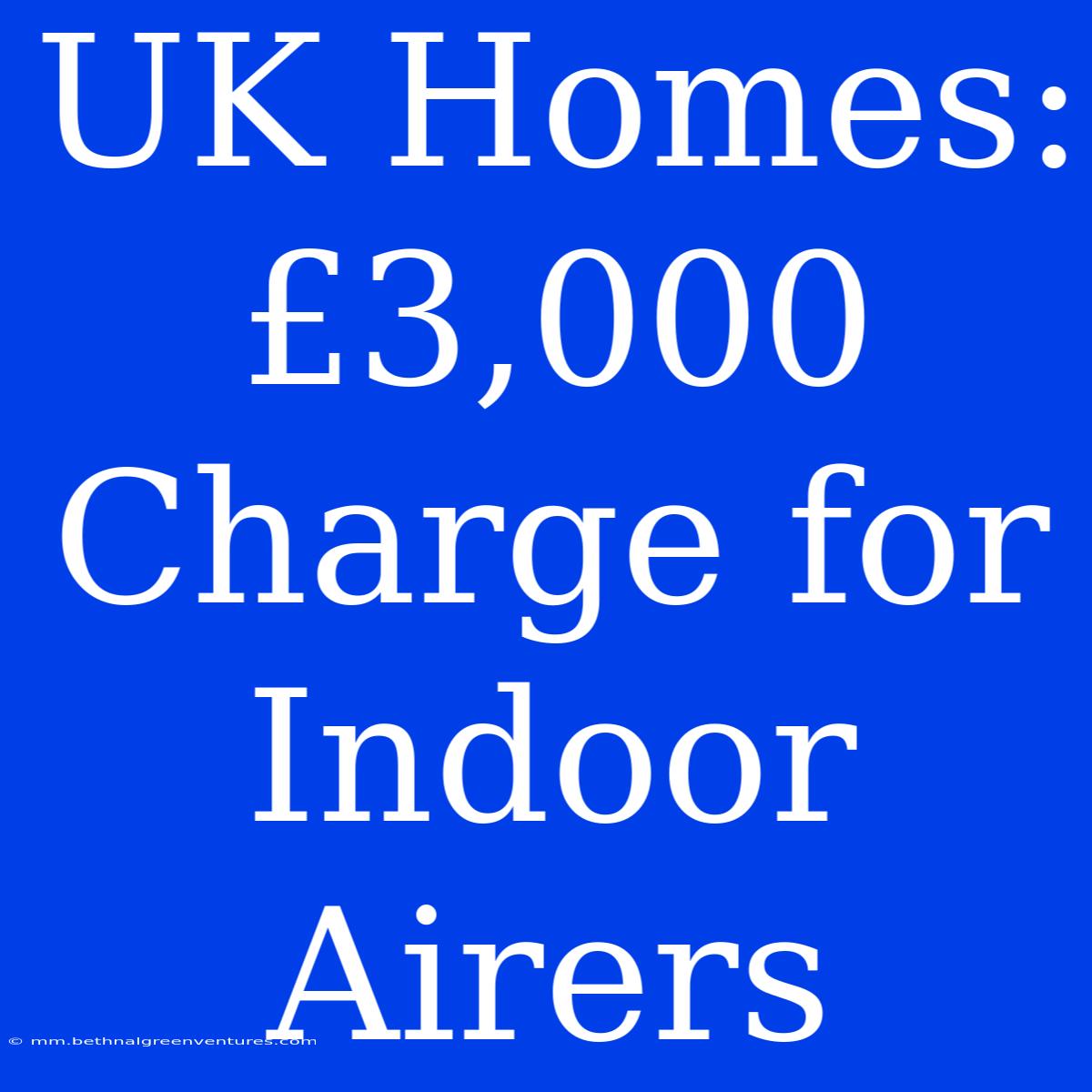UK Homes: £3,000 Charge for Indoor Airers - A New Headache for Homeowners?
Are you considering an indoor airer for your home? A new regulation is set to impact UK homeowners, with an unexpected £3,000 charge for indoor airers. This is a significant development for homeowners and a potential barrier to adopting this popular drying solution.
Editor Note: The UK government's recent proposal to impose a £3,000 charge for indoor airers has sparked debate across the nation. Understanding the reasons behind this move and its implications for homeowners is crucial.
This regulation is being proposed as part of the government's efforts to reduce carbon emissions. The argument is that indoor airers, with their high energy consumption, contribute significantly to the UK's carbon footprint. However, this move has raised concerns among homeowners, especially those residing in areas with limited outdoor drying space.
Our Analysis: We delved into the proposed regulation, examining its potential impact on homeowners and exploring alternative drying solutions. We've compiled a comprehensive guide to inform you about this regulation, its implications, and the key questions you need to ask before making a decision about your home's drying needs.
Key Takeaways:
| Aspect | Description |
|---|---|
| Proposed Charge | £3,000 per indoor airer |
| Reasoning | Reduce carbon emissions from high energy consumption |
| Impact | Potentially deter homeowners from using indoor airers |
| Alternatives | Traditional line drying, heated airers, dehumidifiers |
Indoor Airers: A Boon or a Bane?
Indoor airers are popular for their convenience, especially in the UK, where unpredictable weather can make outdoor drying a challenge. They offer a quick and efficient way to dry clothes, particularly in colder months. However, they do consume a considerable amount of energy, leading to the proposed regulation.
Energy Consumption and Efficiency
- High Energy Use: Indoor airers are known for their high energy consumption, often exceeding that of traditional dryers.
- Efficiency Variations: Different models have varying energy ratings, ranging from A to G, with A being the most efficient.
- Cost Comparison: While initial cost is lower than a tumble dryer, running costs can be higher due to energy consumption.
Alternatives to Indoor Airers
- Traditional Line Drying: Weather permitting, line drying remains a cost-effective and environmentally friendly alternative.
- Heated Airers: Offer an energy-efficient drying option, with lower running costs compared to traditional indoor airers.
- Dehumidifiers: Effectively remove moisture from the air, creating a dryer environment for clothes, especially in humid conditions.
The Regulation's Implications for Homeowners
- Financial Burden: The £3,000 charge can pose a significant financial hurdle for homeowners, impacting their decision-making process.
- Reduced Choice: The regulation might limit the drying options available to homeowners, particularly in areas with restricted outdoor drying space.
- Environmental Concerns: While aiming to reduce carbon emissions, the regulation might lead to increased reliance on tumble dryers, which consume even more energy.
FAQ
Q: Why is the government proposing this regulation? A: The government aims to reduce carbon emissions and promote energy efficiency within homes.
Q: How will this affect homeowners who already own indoor airers? A: The proposed regulation is likely to apply only to new purchases, not existing indoor airers.
Q: Are there any exceptions to this charge? A: Information regarding exceptions is currently limited. It's advisable to check with the government's official website for updates.
Q: What are the best alternatives to indoor airers? A: Traditional line drying, heated airers, and dehumidifiers are popular alternatives with varying energy efficiency levels.
Tips for Choosing a Drying Solution
- Consider Energy Efficiency: Look for models with high energy ratings, such as A+ or A++.
- Evaluate Your Needs: Consider your available drying space, frequency of laundry, and budget.
- Compare Prices: Factor in both initial and running costs when comparing different options.
- Research Alternatives: Explore heated airers, dehumidifiers, and line drying options to find the most suitable solution.
- Consult an Energy Expert: For tailored advice on energy efficiency, consider consulting a qualified professional.
In Conclusion: The proposed regulation concerning indoor airers has significant implications for UK homeowners. Understanding the potential impact and exploring alternative solutions is crucial before making a decision. This comprehensive guide offers valuable insights and recommendations to navigate this evolving landscape, enabling you to make an informed choice for your home's drying needs.
